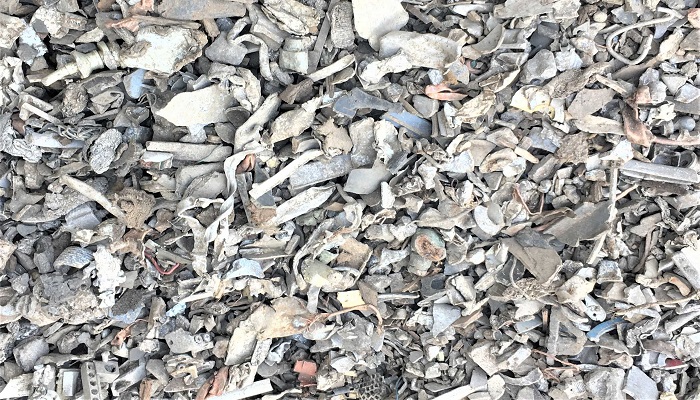The importance of proper handling and processing of aluminium scrap
Team AL Circle
2024-06-09
From the takeout dinner from last night to your empty can of your favourite soda lying in the trash, aluminium scrap can be found in every household. Now, imagine the volume of aluminium scrap that would be generated daily from construction sites, automobile factories, and other industries. The volume is huge. The goodness is that this aluminium scrap does not have to end up in landfills if each of us takes the responsibility to treat it properly. Aluminium is an infinitely recyclable metal that can be recycled and made into secondary aluminium.
 Aluminium scrap is a key player in aluminium recycling. As the global demand for aluminium rises, wisely processing and handling aluminium scrap has become imperative. In 2020, the International Aluminium Institute revealed that Europe has the highest recycling efficiency rate for aluminium scrap at 81%. Furthermore, North America has the highest recycling input rate of 57%, which means a significant portion of aluminium produced in the region comes from scrap. What drives actors of the aluminium industry to focus on aluminium scrap recycling?
Aluminium scrap is a key player in aluminium recycling. As the global demand for aluminium rises, wisely processing and handling aluminium scrap has become imperative. In 2020, the International Aluminium Institute revealed that Europe has the highest recycling efficiency rate for aluminium scrap at 81%. Furthermore, North America has the highest recycling input rate of 57%, which means a significant portion of aluminium produced in the region comes from scrap. What drives actors of the aluminium industry to focus on aluminium scrap recycling?
Environmental benefits of handling and processing aluminium scrap
Every time someone mentions aluminium scrap handling and processing, the first thing that comes to mind is secondary aluminium production. In a world where different sectors focus on reducing emissions and carbon footprints, recycling aluminium scrap is a pathway to achieving zero carbon footprint. This long-term vision is what should inspire us all.
How is aluminium scrap processing ShAPE-ing technological and process innovation?
The Pacific Northwest National Laboratory (PNNL) of the US Department of Energy has revolutionised the processing of post-consumer aluminium scrap. Their groundbreaking technology, Shear Assisted Processing and Extrusion Process (ShAPE), is a game-changer for the construction industry. It allows for the conversion of aluminium scrap into high-quality aluminium extrusions that meet stringent industry standards, marking a significant step in technological and process innovation.
Scrap to Zorba: What happens to aluminium scrap when handled correctly?
As you know, aluminium scrap can be recycled into secondary aluminium. But let's get into the finer details of specific products, their application, and the innovation process that starts from aluminium scrap. Zorba is a form of non-ferrous scrap metal consisting mainly of aluminium, especially that left behind after an automobile is shredded and the iron and steel are removed.
Let's delve into the role of Zorba in the production of secondary aluminium. Zorba, a mixture of non-ferrous scrap metals, primarily aluminium, is a crucial raw material. When carefully processed, aluminium scrap zorba transforms into a high-grade secondary aluminium alloy known as Twitch. This premium-quality secondary aluminium is highly sought after by manufacturers in the automobile and aerospace industries, underlining the value of Zorba in the recycling process.
Overcoming the challenges posed by impurities in Zorba and the lack of a refinement process, aluminium producer Alcoa has patented a new metal purification process, Astrea. This innovative process enables the company to refine post-consumer aluminium scrap and create high-purity secondary aluminium from Zorba. The emergence of this new process not only addresses existing issues but also opens new possibilities for aluminium scrap handling, paving the way for groundbreaking opportunities in the value chain.
Aluminium scrap and the circular economy
Finally, aluminium scrap can lead to a sustainable circular economy as it is an infinitely recyclable metal. Recycling aluminium scrap leads to innovation and reduces carbon footprint, low emissions, and reduced energy consumption. It also creates job opportunities and revenue streams in an economy. Therefore, at this juncture, it is safe to say that proper handling and processing of aluminium scrap is imperative for the sector to thrive and proliferate. However, the benefits of recycling aluminium scrap are not restricted to the aluminium industry alone. Adopting secondary aluminium is the first step towards a greener future for various other sectors, such as construction and automobiles.
Categories
Raw Materials
Scrap
Consumables
Primary Aluminium
Secondary Aluminium
Equipment
Technology
Downstream Products
Finished Products
Utilities
Services
Others
Recent Blogs
Subscribe to newsletter
Connect with us












